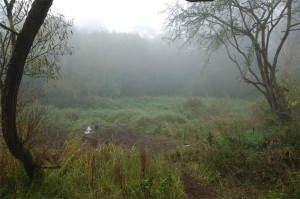Ancient metal artefacts found at a Leicestershire site could go on permanent display, archaeologists say.
 |
| Ancient human remains have also been found at the site, a former Iron Age fort [Credit: BBC] |
The finds include spears, knives, iron brooches, reaping hooks and the decorative bronze trim from a shield. Burrough Hill is the site of an Iron Age fort but no major excavation had taken place there since the 1970s.
Read the rest of this article...


















